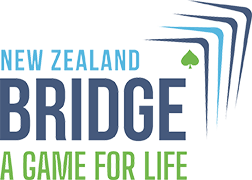
2C opening and Rule of 29
Last year I played with a Junior partner who opened 2C on this hand:
S: KQ62 H: AQ8 D: AQ752 C: Q
I bid 2NT partner 3NT and I made 3
An opponent, after counting up dummy’s HCP and cards in the two longest suits, called the Director saying it was an illegal opening because the total was less than 29 (it was 28)
I agree it was wrong to open that hand 2C and it was lucky my hand wasn’t a bit weaker or a bit stronger otherwise we would have gone down in game or slam respectively.
A 1D opening would get us into game Ok.
The Director said there were no grounds for any adjustment but added “don’t do that again” (presumably implying a PP could result if they did)
Pardon??
Is there is a rule which says making a mistake is illegal?
What if either of these hands was picked up later in the day?
[a] S: AKJT98 H: AKJT98 D: void C: 2
or
[b] S: AT98 H: AKQT D: AKT9 C: 2
What should these hands be opened if to open 2C is forbidden?
At the time I asked the Director what they would open with the first example and was told “1S; someone will keep the bidding open”
Well, I wouldn’t want to rely on my opponents being that co-operative!
It is easy to construct a responder’s hand, with a spade shortage and a heart fit, which would be left in 1S when 6H could easily be made.
As for the second example the beginners’ cheat sheet on this website says: “2C Opening: 20+ unbalanced or 23+ balanced”.
But this unbalanced 20-count doesn’t meet the rule of 29!
So a Junior could be socked with a PP by following the lessons???
The mind boggles
Latest Posts on this Thread
- SEAN LYNCH10 Apr 2025 at 08:09PM
Hi Nick,
To systemically open a 2C opening unalerted by partnership agreement the bid must be game forcing. Where 'game forcing' is defined in the NZBM as:
A hand containing (a) 23+ HCP if balanced or semi-balanced or; (b) 20+ HCP if unbalanced (with allowance for distribution – 1 point for every card after the ninth card in the two longest suits)
Note: Losing trick count, alone, is not adequate for determining whether a hand qualifies as a Game Force hand.
For distributional unbalanced hands with less than 20 HCP the above definition can be rearranged to the rule of 29 - total HCP plus length of 2 longest suits equals 29 (i.e minimum HCP that may be held in a game forcing opener is 16 with 13 cards in two longest suits etc).
NZBM Appendix 15:
The psyching of a conventional bid which is unequivocally forcing and systematically indicates the strongest possible hand (eg a Game Forcing 2C or a Precision 1C) is strictly forbidden.
A psyche bid is an gross misrepresentation (i.e 3 HCP or more less than promised opening strength). An underbid is 1 to 2 HCP less than minimum promised opening strength.
So for the original example hand this could be a legal underbid if bid intentionally occasionally non-systemically, or an unintentional error.
The second hand example could also be opened 2C occasionally legally as a non-systemic underbid.
All 20+ HCP unbalanced hands comply with the above game forcing definition regardless of the length of the two longest suits (i.e total HCP plus length of two longest suits may be less than 29, and minimum of 28) so hand 3 meets the definition of a game forcing opener.
The issue arises if a partnership wish to use 2C to systemically open unbalanced hands with less than 19 HCP, such as the first and second hands, by partnership agreement that don't comply with the game forcing definition such as, say, all 3 loser hands, or that instead, say, meet the rule of 28. In which case the 2C opening must be alerted.
Click here to log in.
